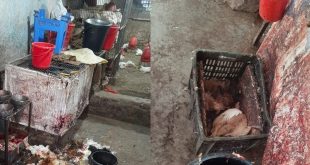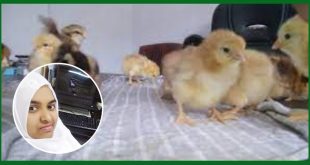One company is not sitting on the sidelines in anticipation of this development, but is instead forging ahead and breaking open new pathways on the regulatory front as well as the scientific front. “We should not keep on waiting for the regulation to change; let’s innovate within the current framework, even though this comes with a part of uncertainty,” said a Lallemand representative at last year’s Feed Additives 2017. And indeed, the organizers of the international livestock event SPACE in Rennes have acknowledged Lallemand’s innovative credentials, awarding its LEVUCELL SB product a coveted two stars in its “Innov’Space” showcase.
However, possibly the most cherished recognition of their innovation efforts is not an award, but a regulatory decision, when the EU authorized the use of a food safety claim—salmonella reduction—for specific in-feed live yeast. This is the first time such a claim has been authorized, and represents the culmination of years of work. To talk about what this breakthrough means for the feed additive category, Feedinfo News Service spoke to Lallemand’s Matthieu Baulez, Global Category Manager – Monogastric Feed and Ludovic Arnaud, Regulatory Affairs and Compliance Manager Europe.
Regarding the sent of this news from Lallemand, agrinews24.com published its as same….
[Feedinfo News Service] The EU has authorized the live yeast probiotic strain Saccharomyces cerevisiae var. boulardii CNCM I-1079 as a feed additive for the reduction of carcass contamination by Salmonella spp. in broiler chickens. Why is this a regulatory breakthrough, in your view?

[Ludovic Arnaud] This is the first time that a feed additive is authorized in the European Union (EU) with a specific food safety function. This means the authorities have acknowledged the benefits of a probiotic feed additive beyond zootechnical performance, on end-product quality, a benefit for the whole food chain up to consumer. We want to see this as a positive and concrete sign in favor of innovative dietary solutions that can help move towards safer and sustainable animal productions. Around 20 years after the first probiotics authorizations in animal nutrition, probiotics are now part of the tool box and we are just scratching the surface of their functional potential.
[Feedinfo News Service] Haven’t probiotics long been used to control bacterial infections, including salmonella, in poultry? What makes this such a revolutionary development when it comes to S. cerevisiae var. boulardii CNCM I-1079?
Matthieu Baulez] First, not all probiotics are created equal. Probiotics are all about strain specific characteristics, features and mode of actions. At LALLEMAND we are making constant efforts to understand those specificities and features in order to offer specific solutions. You are right, a lot of companies claim effects such as “control of negative bacteria” but it is often based on in vitro results. S. cerevisiae boulardii CNCM I-1079 has been screened, selected and specifically developed for monogastrics application. The S. cerevisiae boulardii CNCM I-1079 modes of action and benefits on the gut microflora are well demonstrated. When these effects in favor of better intestinal conditions in vivo translate into benefits for the reduction of carcass contamination by Salmonella spp, this is one step further. It is a feed additive feature that meat consumers are benefiting from—truly “from farm to fork”. This positive effect has even been acknowledged by the European Food Safety Authority. That’s really a scientific innovation.
Finally, we have developed a unique live yeast microencapsulation technology (TITAN). Thanks to the patented Titan technology, S. cerevisiae boulardii CNCM I-1079 is able to withstand most broiler feed pelleting processes.
[Feedinfo News Service] What makes S. cerevisiae boulardii CNCM I-1079 mode of action different from existing solutions and efficient for the control of foodborne pathogens?

[Matthieu Baulez] S. cerevisiae boulardii CNCM I-1079 is a documented probiotic that helps balance the digestive microbiota and reinforces the hosts’ natural defenses. This specific probiotic yeast strain has shown to help the birds cope with challenging situations by improving the gut morphology and stimulating immune organs activity. Its specific modes of action mainly come from its unique oxygen scavenging property, creating in the digestive tract an anaerobic environment unfavorable to undesirable bacteria development. Being a probiotic yeast, S. cerevisiae boulardii CNCM I-1079 is furthermore intrinsically resilient to the medication commonly used in the feed or through the water line, but also viable, compatible and active along the birds gut environment.
[Feedinfo News Service] The European Food Safety Authority has recognised the efficacy of S. cerevisiae boulardii CNCM I-1079 against Salmonella spp. contamination. Are there any indications that it is also efficient against other food-borne pathogens?
[Ludovic Arnaud] Indeed, we also have data showing efficacy against Campylobacter infection. Several trials have indicated a reduced frequencies of Campylobacter prevalence in the birds’ caecal and carcasses skin samples. This is really significant as Campylobacter is an emerging and growing food safety issue in Europe. According to EFSA, today Campylobacter is becoming the most frequent food-borne illness in Europe, with over 190,000 human cases reported in the EU and recent publications have suggested that this figure may be dramatically underestimated (https://www.efsa.europa.eu/en/topics/topic/campylobacter). The industry is still hunting for solutions to control Campylobacter in the poultry flocks and on the carcasses. We believe that S. cerevisiae boulardii CNCM I-1079 can be part of the tool box.
[Feedinfo News Service] Salmonella reduction is an important human health consideration, but it might be difficult to translate that into higher value sales. Have you found customers to be receptive to the human health argument, or are they mostly interested in the performance benefits of S. c. boulardii?
[Matthieu Baulez] Well, of course, it is an innovation in response to the expectations of the poultry industry.
As we previously said, S. cerevisiae boulardii CNCM I-1079 is first of all a probiotic with numerous well-established benefits, helping to maintain the animals in good health by balancing their gut microbiota and strengthening their natural defenses. This results in animals which are more resistant to stressful situations (high density and growth rate, administration of antibiotics, bacterial challenges, farms prone to infectious skin) and translates into better viability and performance on farm.
At the same time, there is increasing pressure on food quality and safety. To cope with this, the different levels of the poultry industry are implementing various measures: systematic screening in breeding, cleaning and disinfection of livestock buildings, analytical control of raw materials by the feed manufacturer, heat treatment of the feed, carcass analysis at the slaughterhouse, specific treatment of carcasses from positive lots, etc. Salmonella control in poultry production is a multi-factorial issue, which has led the industry to develop integrated prevention programs from the raw material reception at the feed mill to the farm biosecurity, so every actor of the chain is concerned. Having the possibility to incorporate in the feed of broiler meat, a probiotic whose effect on the reduction of carcass contamination by Salmonella is validated and recognized by the European authorities, is a real opportunity for the industry.
[Feedinfo News Service] How does this fit in with future Lallemand research priorities? Does Lallemand intend to remain active in the field of pathogen control outside of this particular solution?
[Matthieu Baulez] We continue to document the modes of action and applications of S. cerevisiae boulardii CNCM I-1079 and as a research-based company we have recently been investing significant efforts in poultry research. For example, at the last 11th Asia Pacific Poultry Conference in Bangkok, no less than 7 scientific poster presentations featuring Lallemand Animal Nutrition research in poultry nutrition were presented, including three on S. cerevisiae boulardii CNCM I-1079 benefits and modes of action. We are also taking one step backwards and are looking at the environment of animal husbandry with positive biofilm solutions dedicated to the improvement of microbial ecosystems of the farms.
 Agrinews24 কৃষির সাথে, কৃষকের পাশে
Agrinews24 কৃষির সাথে, কৃষকের পাশে





















